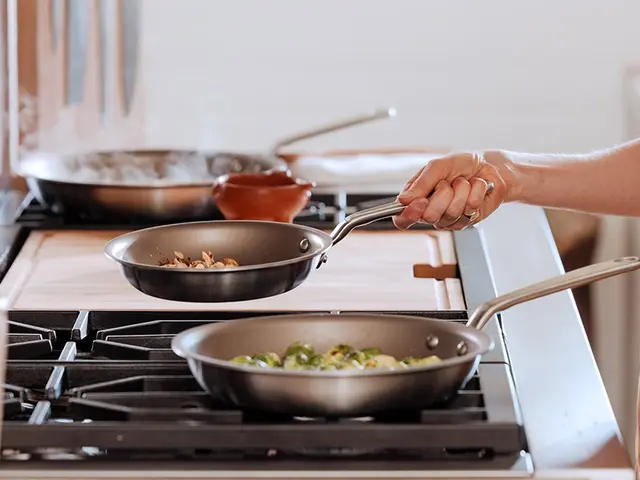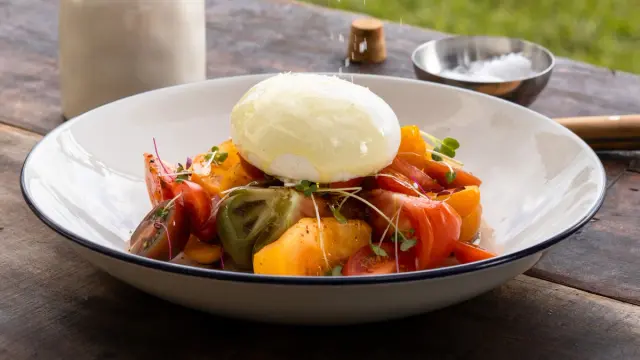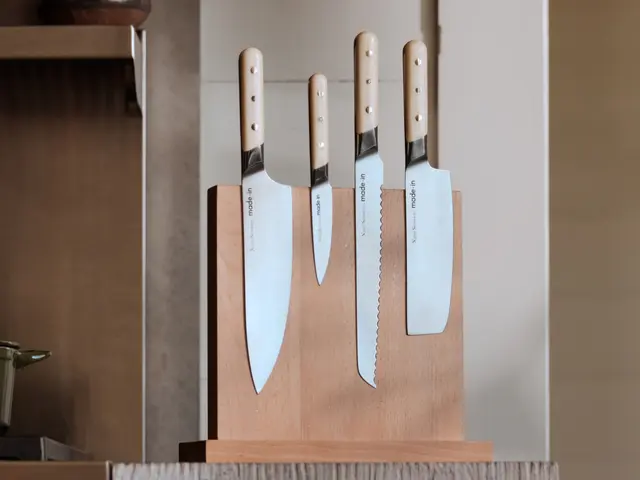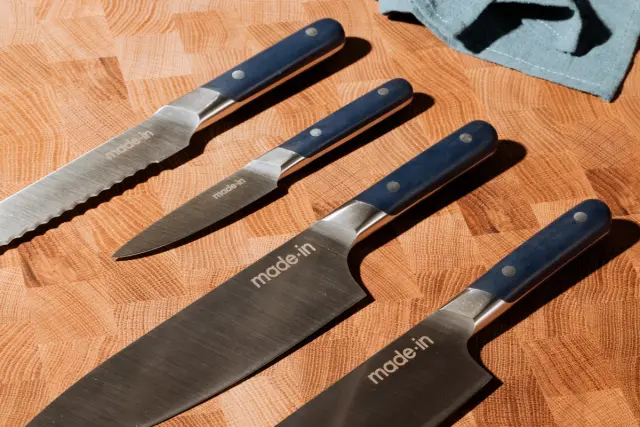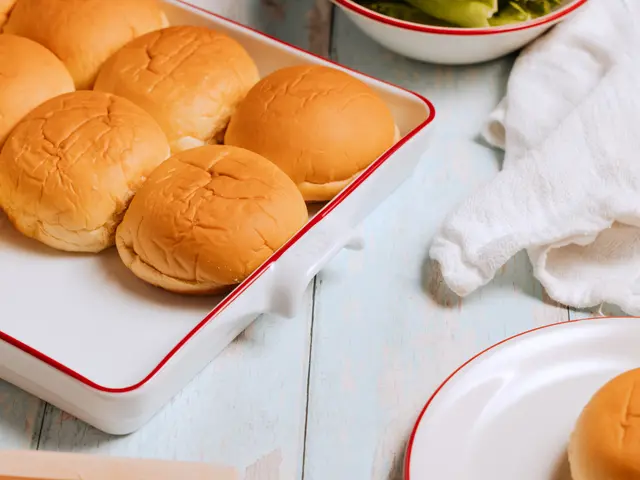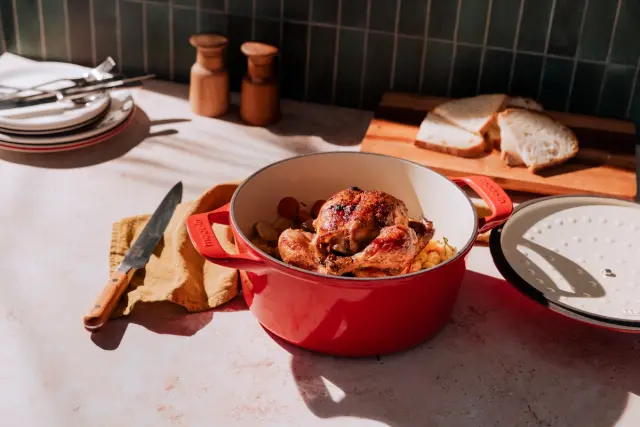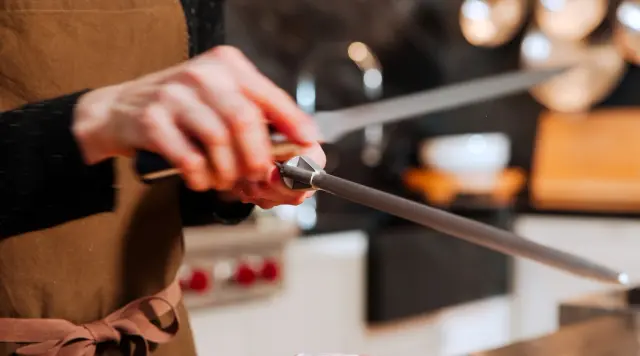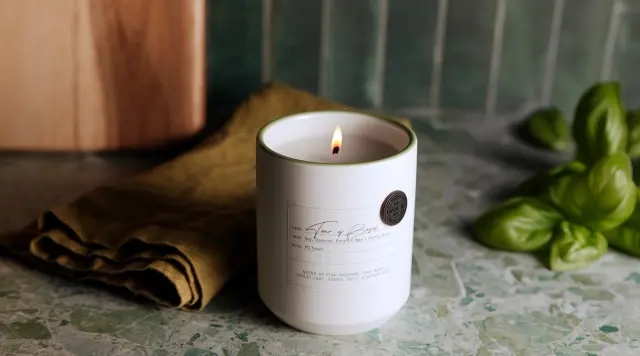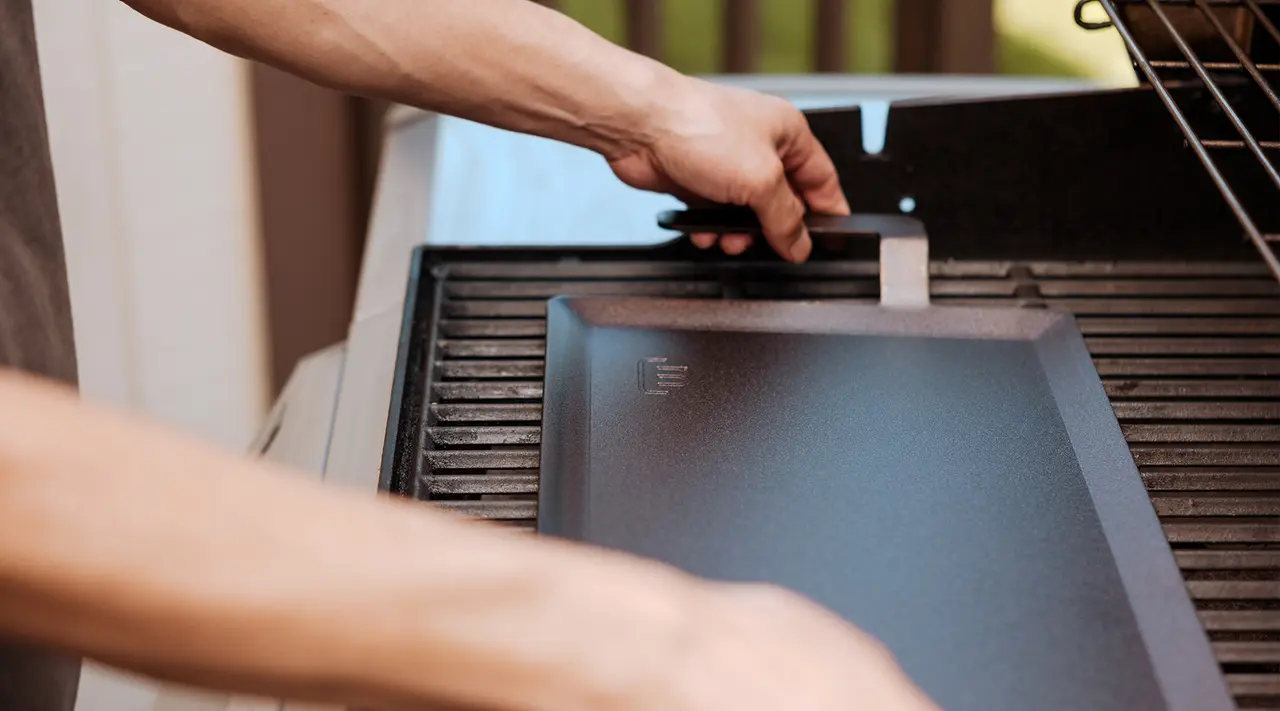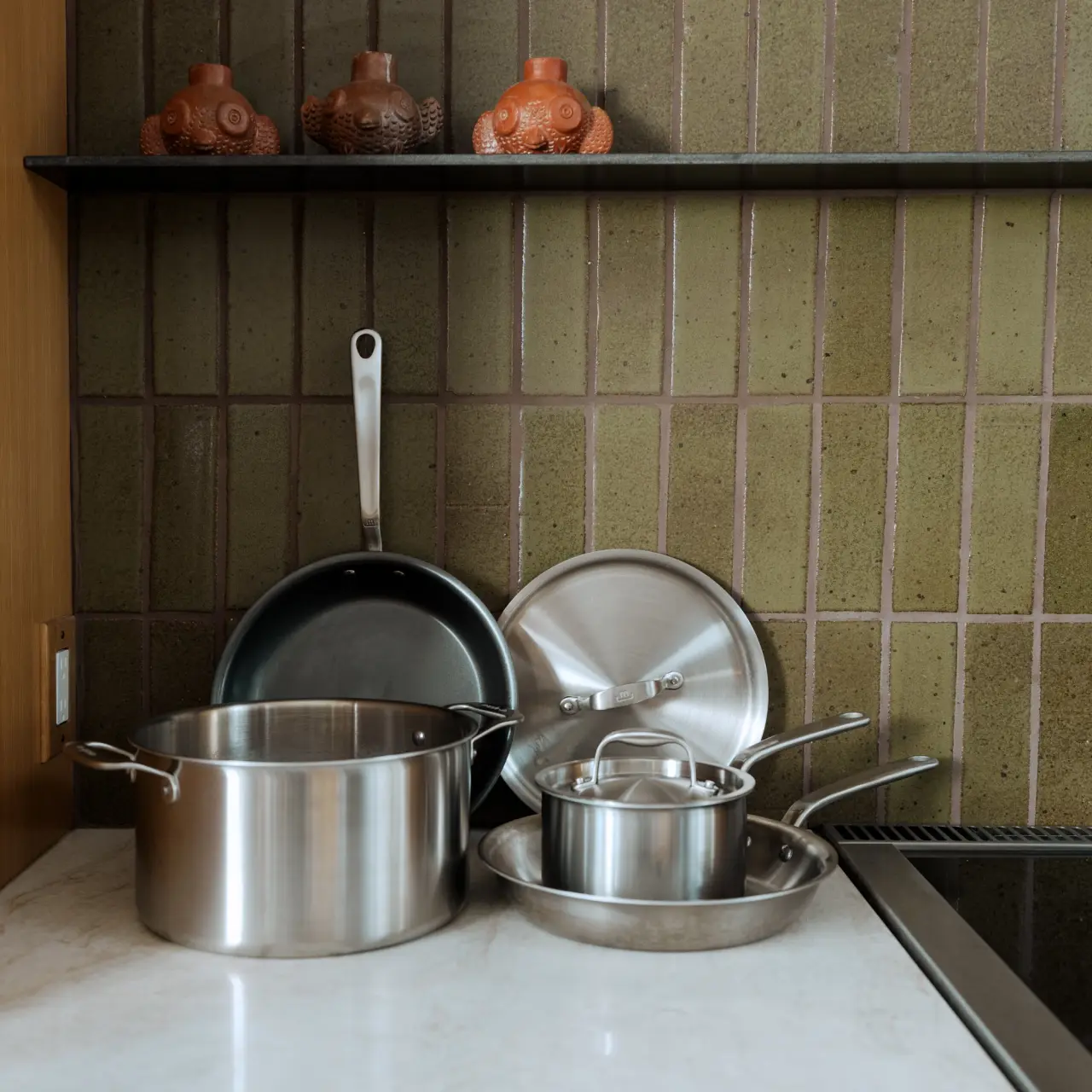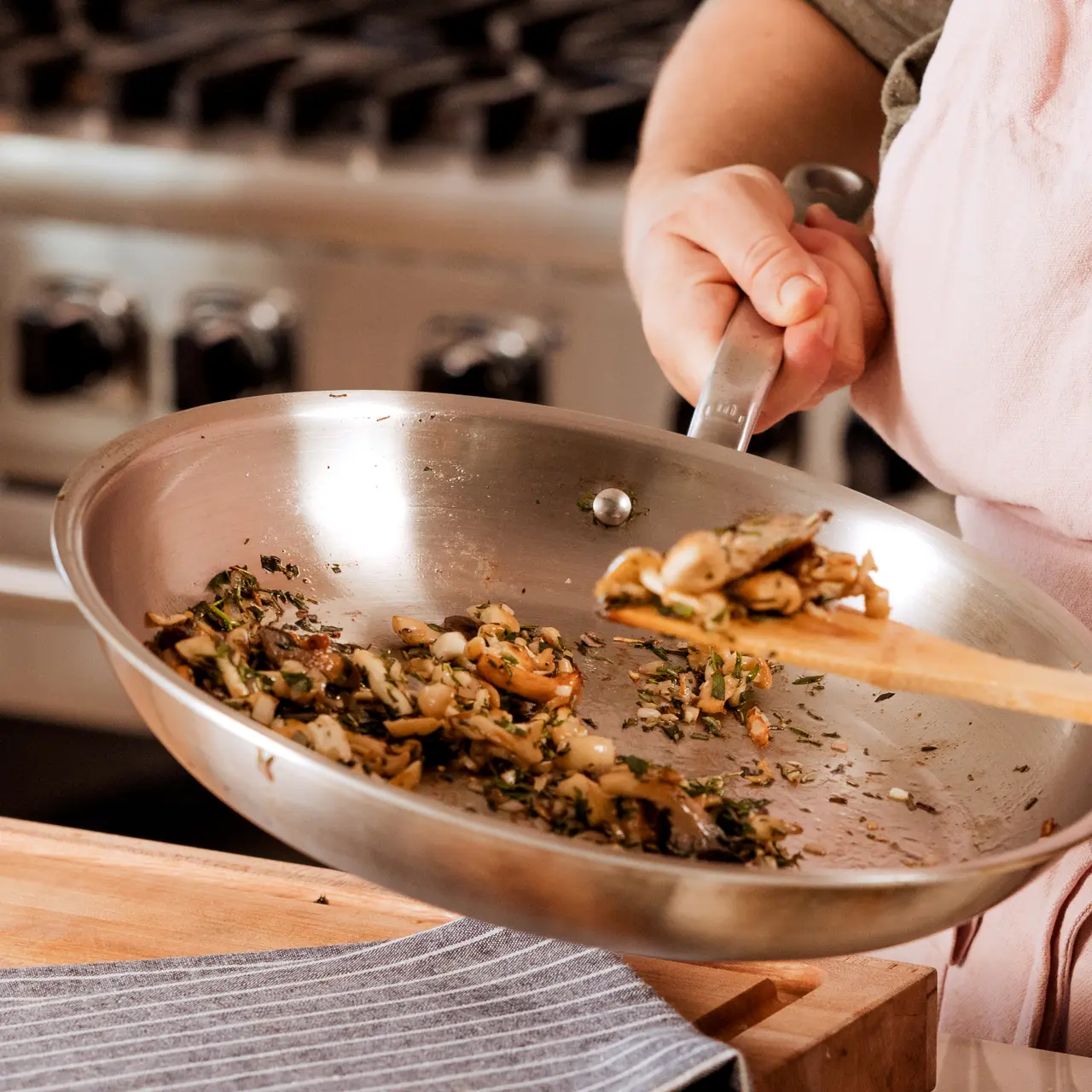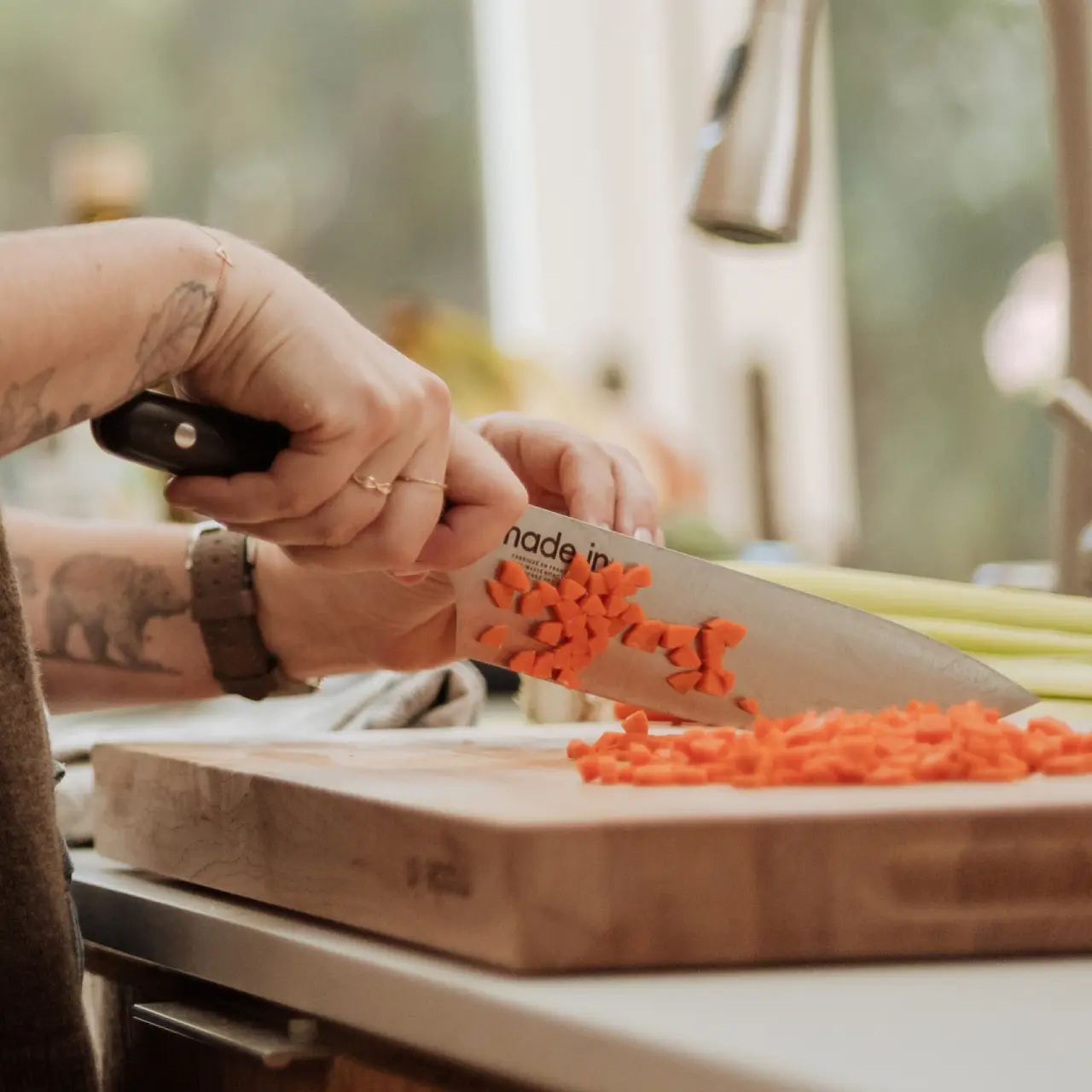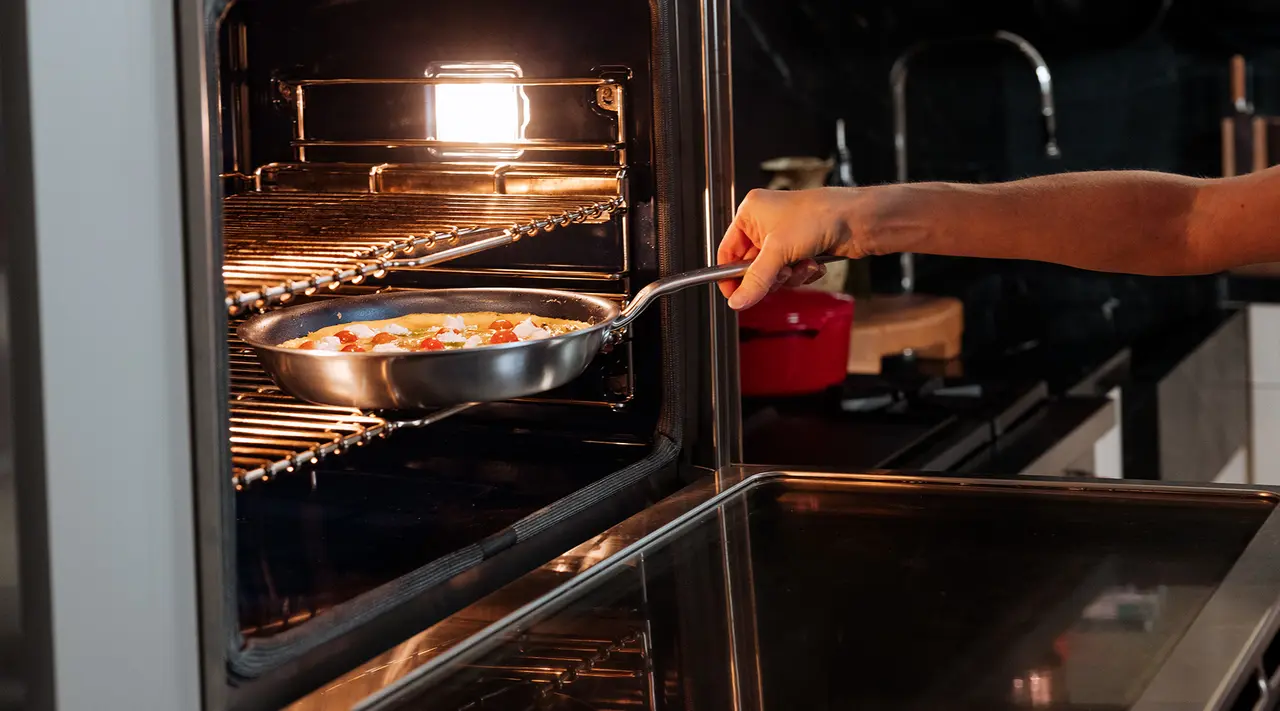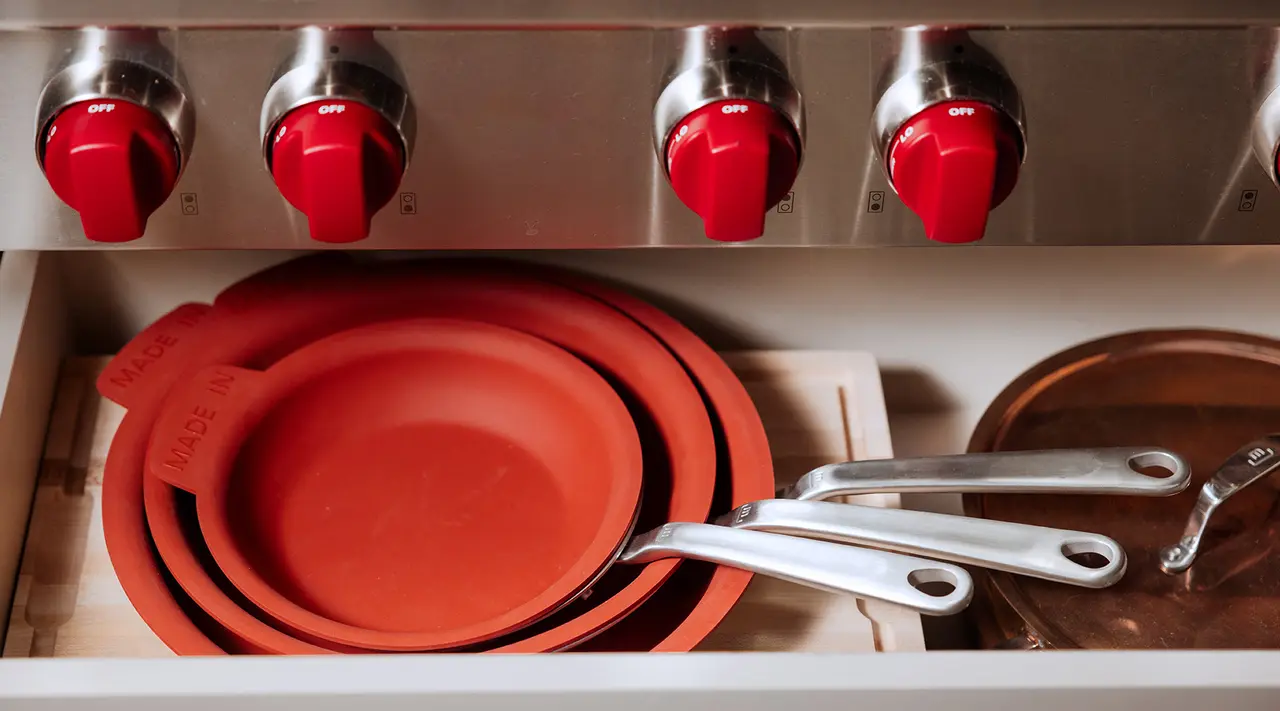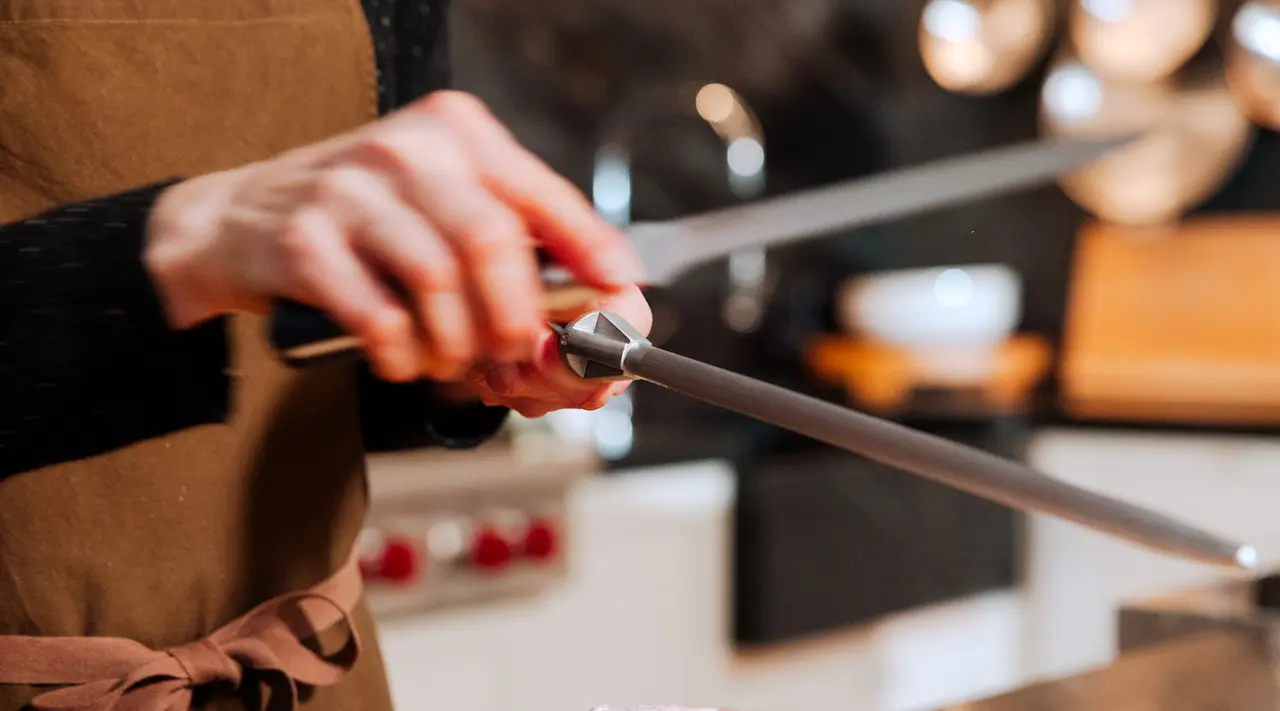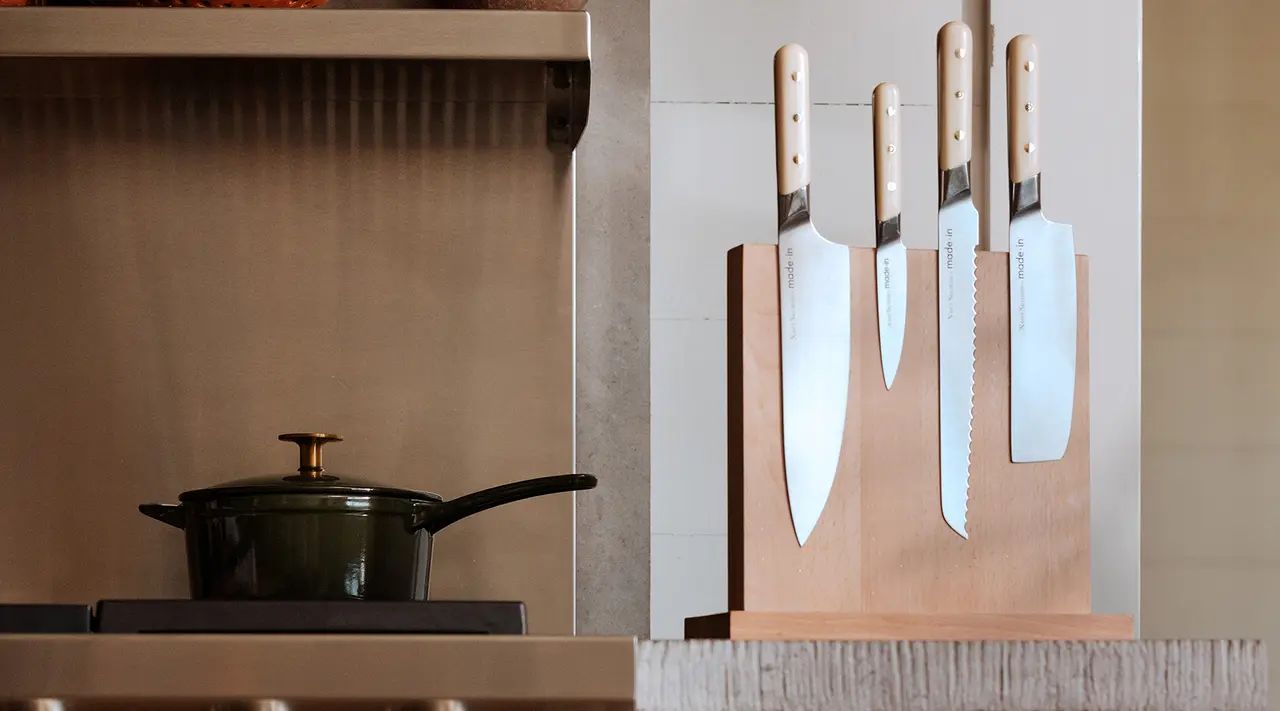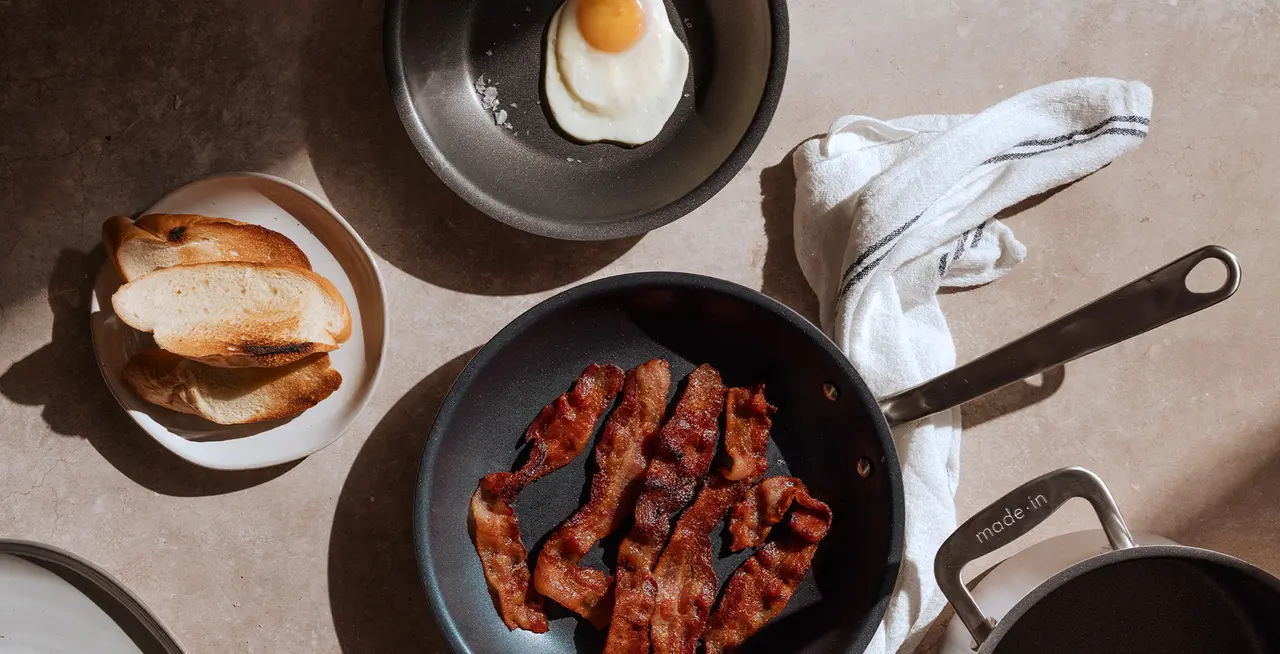Endlessly versatile, Carbon Steel Griddles are the perfect tool for cooking everyday favorites ranging from pancakes and paninis on the stovetop to grilled fish and charred vegetables out on the grill. Unlike your dirty plates and silverware, though, you can’t just throw your griddle in the dishwasher.
While it’s not hard to clean a carbon steel griddle, there are some do’s and don’ts to keep in mind. Let’s dive in so you're equipped with exactly what you need to get—and keep—your griddle in tip-top shape.
When to Clean a Griddle
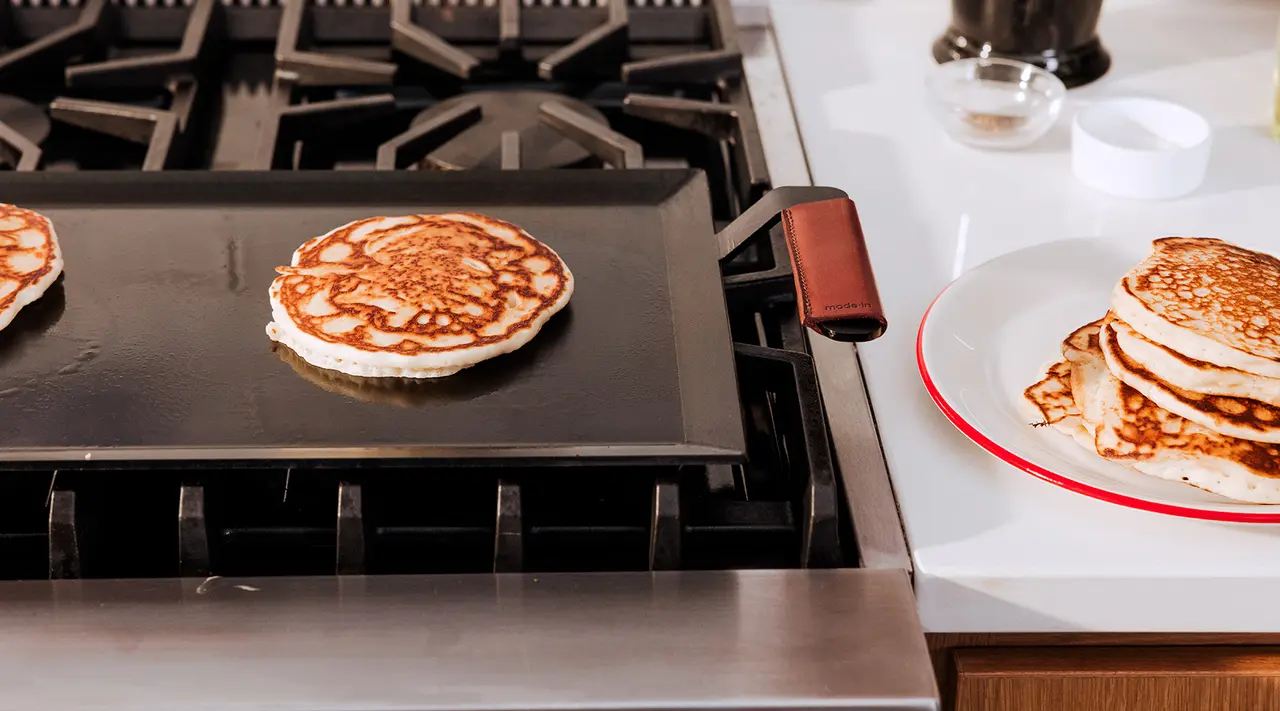
Just like any other piece of carbon steel cookware, it’s best to clean your griddle after each use so that oil and food residue doesn’t build up over time. This simple routine will help your griddle retain an even seasoning, so its surface remains naturally non stick and future griddle care stays manageable.
The level of cleaning required for your griddle will range on what it was used to cook and the degree of mess left behind. Most of the time, a simple rinse with dish soap and water will get the job done—but if your griddle is looking a little worse for wear after bringing it along on a camping weekend, it'll require a more in-depth cleaning regimen.
With this in mind, we've broken down cleaning your griddle into everyday use (think post-Sunday morning pancakes and bacon) and deep cleaning (or when there's too much residue or oil to see the surface). One thing remains the same across cleaning levels for any piece of carbon steel cookware: never, ever, put your griddle in the dishwasher.
How to Clean a Griddle After Everyday Use
It doesn’t take much to clean carbon steel cookware after it was used to cook a meal; just water and a little time. Still, a few pro tips will help to keep it in perfect condition for next time.
Step 1: Remove Excess Food
While the griddle is cooling, gently use a bench scraper or a silicone or wooden spatula to remove any food remnants. If there's none to be found, let the griddle cool completely before moving to the next step.
Step 2: Rinse With Water
Once excess food has been removed and the griddle is completely cool, take your griddle to the sink and rinse with warm water. Use the abrasive side of a dish sponge—sans soap—to gently scrub at the surface until any lingering oil or residue is gone. If you run into any particularly stubborn small food particles, try scrubbing at it with coarse salt if the sponge doesn't take care of it.
Step 3: Rinse and Dry
Once the griddle is fully cleaned, give it one final rinse, then dry it completely using a clean dish towel or paper towel. For peace of mind or if you're storing it after use, dry it on low over two burners on the stove for a few minutes until it's bone dry.
If you're cleaning after your first use, you may notice a bit of discoloration after drying it. This is perfectly normal and is an indicator your pan is beginning to develop a thicker seasoning layer—over time and with more use, the seasoning layers will even out.
Step 4: Store Your Griddle Properly
Make sure your griddle cools to room temperature and is completely dry before storing it in a cool, dry place.
How to Deep Clean a Griddle
If it’s been a while since your griddle was properly cleaned or you cooked something that requires some extra elbow grease, you may need more than hot water to get it back into shape. Rust, excess seasoning, burnt-on food, and oil residue are simple to remove with the help of coarse salt, cooking oil (we like grapeseed for this), and paper towels.
Step 1: Let the Griddle Cool
Let your griddle completely cool before handling it. If there's loose residue or oil, give it a quick wipe with a paper towel.
Step 2: Start Scrubbing
Pour 1-2 tablespoons of salt onto the surface of the griddle and start scrubbing the residue with a paper towel. The abrasive nature of salt helps to loosen any stubborn stuck-on bits or oil without affecting the seasoning too much—though if you notice some small chips in your seasoning while you clean after a particularly messy meal, there's no reason to panic. Just give your griddle a quick reseason after you've cleaned it.
The salt may begin to dissolve as you work it into the surface more; if that's the case, just pour a little more as you go.
Step 3: Wipe It Out
Wipe any lingering salt and oil off the surface of the griddle with a paper towel. If your griddle is clean, ensure it's thoroughly dry before storing it for next time. But if it needs a bit more TLC, proceed to the next step.
Step 4: Bring to a Boil
Put your griddle back on the stovetop and pour just enough water to cover the surface. Slowly bring the water to a boil over low to medium heat.
Step 5: Scrape
While the water is coming to a boil, gently scrape at the remaining residue with a wooden spoon. As the water boils, the residue should loosen and begin to float in the water. Once any lingering food or oil particles have been removed, dump it into the sink or trash can and let the griddle cool.
Step 6: Dry and Reseason
Once your griddle is fully cooled, wipe it down with a dish towel or paper towel. If it's looking a little dry after being cleaned, reseason the surface by applying a small (pea sized or smaller) amount of cooking oil to the cooking surface and rubbing it in with a paper towel.
Griddle Maintenance Tips

When you regularly care for and maintain your griddle, you ensure that it will be around for years to come. Here are some additional care tips to help you get the most use out of your griddle for many meals to come.
Clean Immediately After Each Use
Cleaning your griddle after each use prevents an unsightly buildup of oils and bits of food. Plus, regular cleanings help to built and nurture a strong seasoning that needs to be stripped and deep cleaned less often.
Never Soak Your Griddle in Water
Due to the high iron content, carbon steel is much more prone to rust, especially if you live in a high-humidity area. To keep your griddle rust-free, we recommend keeping it as dry as possible, and especially avoid soaking it. If you have some stubborn residue, either of the above cleaning methods will do a better job at cleaning it than soaking it.
Dry Thoroughly
Along the same vein as above, making sure that your griddle is completely dry will help prevent rust as well. You may find that increased humidity in warmer months also increases rust buildup—our best advice for this is to use your griddle often, and (after washing and drying thoroughly) rub a very thin coating of oil into the griddle’s surface before storing.
Reseason Semi-Regularly
Seasoning (or reseasoning) your griddle is a regular part of the material’s care and maintenance. Often, cooking with fatty foods like burgers, steak, or bacon will take care of it for you. If you notice your griddle starting to stick, rust, or feel completely dry, it’s probably time to reseason.
Ready to Cook?
A well-maintained griddle should be ready when you need it for years to come. With the right techniques and some simple household ingredients, you can keep your griddle clean and ready to tackle a variety of recipes this summer, from high-heat sears on the grill to Sunday pancakes on the stovetop.
